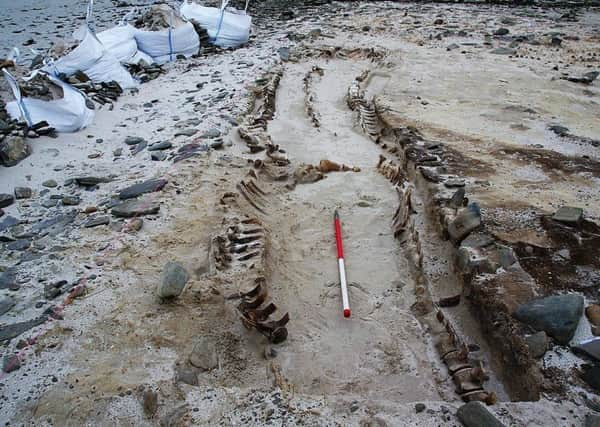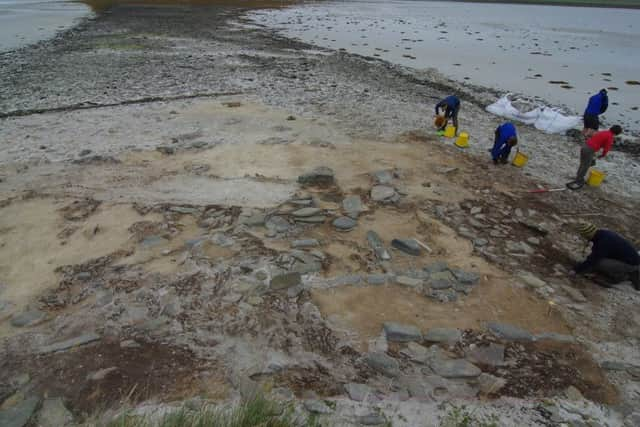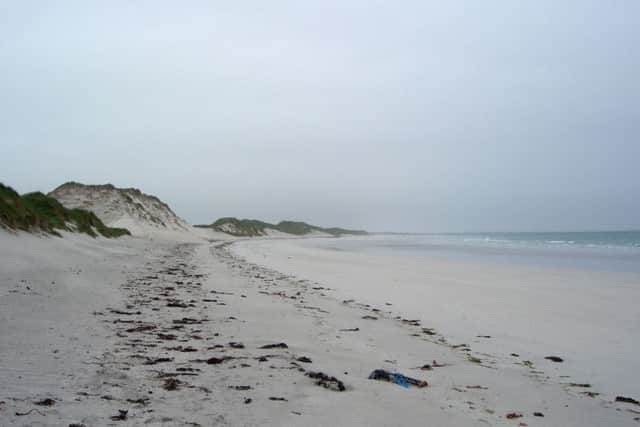'Amazing' find of 12 whale skeletons on Orkney beach


Two pits containing the bones have been found on Cata Sand on Sanday by a team of archaeologists led by University of Highlands and Islands.
The find has been described as a “most amazing and unexpected discovery” by the university.


Advertisement
Hide AdAdvertisement
Hide AdRemains of an Early Neolithic house, which is likely to be some 5,400-years-old, have also been excavated.
Research is underway to determine the origin of the skeletons but an account from 1875 records how 80 whales were driven ashore at Cata Sand before they were killed for their blubber, which was widely used to make lamp oil.
An earlier account records how hundreds of whales were driven on to Cata Sand during the 18th Century.


The beach excavation follows on from a stunning find made by the UHI team in 2015 of a bronze age settlement at Tresness on Sanday which had become buried by shifting sands over time.
The remains of the early Neolithic house, which include pieces of hearth and stone walls, date from around 3400BC to 3100BC
It is the first ‘classic’ early Neolithic house to be discovered in Sanday, a university spokesman added.
Fragments of pottery, Skaill knives, a grinding stone, flint working remains and animal bones have also been unearthed at the site of the house.


Advertisement
Hide AdAdvertisement
Hide AdHe said: “More importantly, preservation is excellent and the floor deposits are a deep red-brown colour and are rich in organic remains.
“As the site is located on sand there is also good bone preservation, which is quite rare in other early Neolithic Orcadian settlements.
“This high degree of preservation will allow us to obtain a unique level of information regarding daily life within the Early Neolithic house.”
The excavation team includes Prof Colin Richards, Prof Jane Downes and Christopher Gee from the Archaeology Institute at UHI and Dr Vicki Cummings from UClan.


Volunteers with the Sanday Archaeology Group have worked alongside experts from the University of Cambridge and specialists from as far away as the School of Conservation and Restoration of Cultural Heritage in Galicia, Spain.
